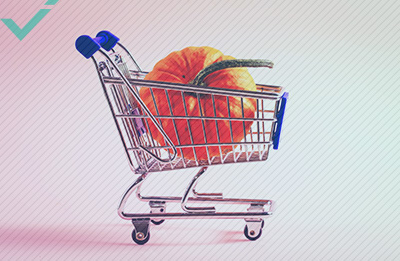Easter is a special time of celebration among people of many different worldviews. The event—which falls near the spring equinox—is believed to stem from ancient pagan traditions. After the advent of Christianity, many followers of the religion associated the time of year with the death and resurrection of Jesus Christ. More recently, Easter has become a secular holiday in which people indulge in chocolate and spend some quality time with family.
Regardless of the reason people celebrate Easter, they tend to spend a lot of money doing so. Many countries have their own unique Easter traditions. Some nations conduct Easter egg hunts and devour boatloads of treats, whereas others indulge in savoury delights and launch fireworks.
EASTER AND E-COMMERCE
The diverse way in which Easter is celebrated offers e-commerce companies a great opportunity to increase conversions and revenue. Double down on popular items and localise your website to appeal to native speakers from around the world. Infuse your marketing campaigns with culturally specific content to pull in Easter traffic from your target countries.
In this article, we’ll explore how Easter is celebrated throughout Europe and beyond. You’ll discover unique traditions, spending trends, and optimal e-commerce strategies for specific regions. Remember, Easter Sunday falls on 12th April this year. Use this guide to prepare for the festivities!

UNITED KINGDOM
Easter is a massive holiday in the UK. Easter eggs, candy, and other gifts line supermarket shelves weeks before Easter Sunday arrives. The day usually starts off with children hunting down Easter eggs that the Easter Bunny hid around their house during the night. After experiencing their first sugar rush of the day, children often spend time painting eggshells with bright colours. People liven up their homes with colourful Easter flowers. These explosions of colour mark the arrival of springtime. Tulips, lilies, and daffodils are usually the blossoms of choice.
Many families attend a church service in the morning, followed by a hefty feast involving lamb garnished with mint sauce. After the main course, hosts serve simnel for pudding. The dessert is topped with eleven marzipan balls, representing eleven disciples of Jesus Christ. If you really want to grab the attention of Brits with your advertising campaign, use the imagery of a hot cross bun! The nation devours these raisin-containing buns in massive volumes at Easter time. They’re usually sliced open, toasted, and slathered in butter.
And keep in mind; the UK spends big at Easter time. In 2019, 70% of the population celebrated Easter. The average amount spent was £24.41, totalling a massive £754 million! In 2020, April 10th (Good Friday) and April 13th (Easter Monday) are both bank holidays, meaning most people have the day off. These dates are worth remembering when it comes to localising your adverts!
NETHERLANDS
The Netherlands celebrates Easter in a similar fashion to other Western countries, just with a few of their own twists and tasty treats. Around 43% of the population follow the Christian faith, meaning a large portion attends church on Easter Sunday. Morning festivities usually involve Easter egg hunts in the garden and painting eggs. Traditional Easter loaf—known as Paasstol— is eaten at breakfast. It’s basically a bread loaf filled with fruit and scrumptious almond paste! Devilled eggs are served on the side. The Dutch usually decorate their tables with eggs and colourful Easter flowers such as tulips. Some families make an “Easter tree” out of willow branches and decorate it with paper bunnies and flowers. During the evening, many citizens head outdoors to gaze upon traditional Easter bonfires, the largest of which occurs in the city of Espelo.
The celebrations don’t stop there! The Dutch people take the festivities with them into Easter Monday, which is a public holiday in the country. Buying furniture has become somewhat of a tradition on Easter Monday. Shoppers descend on local malls to find new pieces for their homes. When they’re not looking for furniture, many people enjoy spending this day with family, visiting Easter markets, and cycling outdoors.
The Dutch don’t hold back on their spending at Easter, especially on food. Spending on stuffed bread increases around 250%, flower and plant sales increase by 88%, and chocolate sales surge by 85%. The nation also does a lot of their shopping online—80% of the population use e-commerce platforms, and over €23 billion was spent online in 2018! Localise your Easter ads to grab a piece of this massive pie.
FRANCE
French parents treat their children to an Easter egg hunt on Easter morning. However, the story behind how these chocolaty treats got there is a lot different. In France, the church bells fall silent between Maundy Thursday and Easter Sunday to mourn the death of Christ. During this time, legend has it that the bells fly to Rome, receive a blessing from the Pope, and scatter chocolate eggs and fish into gardens on their return. The bells begin ringing again on Easter Sunday to celebrate the resurrection. Painting eggs is uncommon in France. Instead, chocolate bells, bunnies, and eggs take centre stage. The French also indulge in a large, traditional meal consisting of lamb stew, cheese boards, and chocolate-based desserts. Daffodils are the Easter flowers of choice and colourfully represent the arrival of spring.
Easter Monday is a public holiday in France. Use this date to localise your sales content and encourage people to invest in what you have to offer.
GERMANY
Easter is massive in Germany. The country goes all out with large meals, long walks, an abundance of chocolate, and mighty bonfires. The celebrations get off to an early start during the beginning of Lent, with huge parades taking place in major cities such as Cologne. As Easter Sunday draws near, families decorate their homes with Easter trees (Osterstrauß). This bundle of branches is placed into a vase and decorated with eggs and manifold wooden ornaments. Willow branches and daffodils usually accompany this eye-pleasing decoration. On Easter Sunday, the Easter Bunny scatters painted hen’s eggs, candy, and chocolate in gardens and on walking routes. People of all ages take part in the hunt. There are even competitions involving egg-eating and egg-and-spoon racing! During the evenings, locals set ablaze bonfires in wooden wheels and roll them down a hill to symbolise the coming of spring.
Food plays a massive part in German Easter traditions. People often bake a savoury green cake (Grüner Kuchen, also known as Speckkuchen—bacon cake) on Maundy Thursday. The dish is made from leeks and topped with cubes of bacon. Easter Sunday meals traditionally feature delicious lamb cakes and braided sweetbreads.
A survey conducted in 2018 showed that 67% of Germans were willing to spend over €15 on Easter gifts. Localise your content to boost conversions on Easter Sunday. Good Friday and Easter Monday are both public holidays in the country.
SPAIN
Easter has a much more religious tone in the country. The Easter period is known as Semana Santa (Holy Week). Religious processions during this time see worshippers parade through the streets in colourful hooded costumes while carrying large floats laden with detailed art. Brass bands fill the air with melodies as citizens mourn the death of Christ.
During this massive ritual, children famously collect the dripping wax from candles in a competitive manner to see who can create the largest ball. When Easter Sunday arrives, Spanish families gather to feast on stockfish, garlic soup (sopa de ajo) or chickpea stews. Apart from Easter eggs, there’s not much chocolate involved, but the Spanish don’t skimp on sweet treats during Easter. These include fried bread covered in sugar and honey (torrijas), deep-fried fritters flavoured with orange and sugar (pestinos), and sweet bread rings covered in cooked eggs, fruit, and sugar (Mona de Pascua).
Good Friday is a public holiday in Spain, but some people return to work on Easter Monday. Localise your content to target Good Friday as a day to spend!
ITALY
Italy is known all over the world for its impeccable cuisine—who doesn’t adore pizza and pasta? The country celebrates Easter with some equally delicious but lesser-known dishes. These include lamb and goat recipes, artichokes, dove-shaped breads, and savoury cakes made from spinach and eggs (Torta di Pasquetta). Much like Spain, the residents of Italy participate in huge events of worship at Easter. A giant Easter mass led by the Pope takes place at the Vatican. Parades erupt across many cities, and participants often attend dressed in traditional ancient costumes and bearing olive branches. Celebrations continue into Easter Monday—a public holiday in the country. The day is known as Little Easter (La Pasquetta) and is full of fun activities including dances and free concerts. In the town of Panicale, locals compete in rolling wheels of cheese down the streets of the town!
USA
It might not surprise you to hear that Easter celebrations in the United States feature a commercialised spin. Around 81% of the population celebrate the holiday, spending around $18 billion each year! The average amount spent is $150 per person. Approximately 28% of shoppers choose to spend their money online. There’s a huge opportunity for e-commerce businesses to boost conversions by targeting the American market. Localise your content by incorporating USA-themed Easter imagery and wording. The nation celebrates the holiday with Easter egg hunts, painting eggs, pre-Lent carnivals, and family feasts. Interestingly, getting married is popular in the country around Easter time. The Easter Bunny is also a large focus in the US.
ASIA
Between 80–130 million Christians live in China. Millions of these citizens attend church to celebrate the resurrection. It’s also common for new Catholics to become baptised on Easter. Some Chinese Christians and non-Christians have adopted the Western tradition of Easter egg hunts. Various malls in the country also capitalise on specific Easter sales.
Easter traditions are much more intense in the Philippines. Devout believers gather in large numbers to beat themselves with bamboo rods while traversing a simulated Stations of the Cross. Some followers even go to the length of being crucified for several minutes!
The nation of Hong Kong celebrates a more westernised Easter. Both Good Friday and Easter Monday are public holidays. Citizens celebrate with face painting and Easter egg hunts. Local carnivals offer events such as balloon twisting and egg craft.

OPTIMISE YOUR CAMPAIGNS WITH HASHTAGS AND KEYWORDS
In the age of Instagram, Twitter, and SEO, hashtags and keywords are vital. Use these virtual tools to ensure your adverts and content score high in search engine results and reach your target audience on social media.
Use these popular Easter hashtags to expose your content to your target audience:
#happyeaster
#easteregghunt
#easter2020
#easterweekend
#easterbunny
#chocolatebunny
That’s your social media content taken care of. Now, utilise these keywords to climb the ladder on Google searches:
Holidays 2020
Good Friday 2020
Ash Wednesday 2020
Easter Sunday 2020
Easter Weekend
Easter Holiday


